fbi
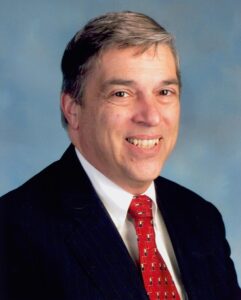
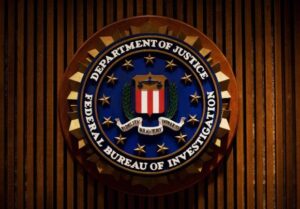 When the FBI began to suspect that they had a mole in the mid-1980s, they assigned the investigation to FBI Agent Robert Philip Hanssen. Hanssen was born April 18, 1944, in Chicago, Illinois, to a Lutheran family that lived in the Norwood Park neighborhood. He was of Norwegian descent. His father, Howard, who died 1993, was a Chicago police officer, and was allegedly emotionally abusive to Hanssen during his childhood. Nevertheless, Hanssen went on to graduate from William Howard Taft High School in 1962 and attended Knox College in Galesburg, Illinois. He graduated with a bachelor’s degree in chemistry in 1966. Hanssen joined the FBI in 1976. Things were going well for him in the FBI, but then, something changed.
When the FBI began to suspect that they had a mole in the mid-1980s, they assigned the investigation to FBI Agent Robert Philip Hanssen. Hanssen was born April 18, 1944, in Chicago, Illinois, to a Lutheran family that lived in the Norwood Park neighborhood. He was of Norwegian descent. His father, Howard, who died 1993, was a Chicago police officer, and was allegedly emotionally abusive to Hanssen during his childhood. Nevertheless, Hanssen went on to graduate from William Howard Taft High School in 1962 and attended Knox College in Galesburg, Illinois. He graduated with a bachelor’s degree in chemistry in 1966. Hanssen joined the FBI in 1976. Things were going well for him in the FBI, but then, something changed.
In 1979, just three years after joining the FBI, Hanssen approached the Soviet Main Intelligence Directorate (GRU) to offer his services. It is thought that he may have had some financial difficulties, and this meeting became the beginning of his first espionage cycle, lasting until 1981. After that, he laid low for a while. Then, in 1981, he restarted his espionage activities and continued until 1991. After that, he ended communications during the collapse of the Soviet Union, because he was afraid that he would be exposed. Hanssen restarted communications the next year and continued until his arrest. Throughout his spying, he remained anonymous to the Russians.
Hanssen spied for Soviet and Russian intelligence services against the United States from 1979 to 2001. His espionage was described by the Department of Justice as “possibly the worst intelligence disaster in US history.” In all, he sold about six thousand classified documents to the KGB that detailed US strategies in the event of nuclear war, developments in military weapons technologies, and aspects of the US counterintelligence program. Hanssen was involved in espionage at the same time as Aldrich Ames in the Central Intelligence Agency (CIA). Both Ames and Hanssen compromised the names of KGB agents working secretly for the United States. Some of those KGB agents were executed for their betrayal. Hanssen also revealed a multimillion-dollar eavesdropping tunnel built by the FBI under the Soviet Embassy. Then in 1994, Ames was arrested. At that time, some of these intelligence breaches remained unsolved, so the search began for another spy. Ironically, they chose the spy himself to search for the spy. How convenient it was for Hanssen. Finally, the FBI paid $7 million to a KGB agent to obtain a file on an anonymous mole. That information led to Janssen’s exposure, when he was identified through fingerprint and voice analysis.
On February 18, 2001, Hanssen was arrested at Foxstone Park, near his home in the Washington DC, suburb of 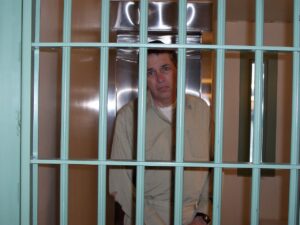
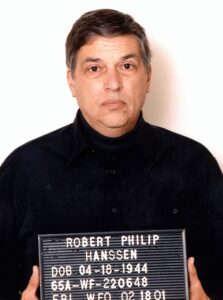 Vienna, Virginia, after leaving a package of classified materials at a dead drop site. Following his arrest, he was charged with selling US intelligence documents to the Soviet Union and subsequently Russia for more than $1.4 million in cash, diamonds, and Rolex watches over a period of twenty-two years. Hanssen pleaded guilty to fourteen counts of espionage and one of conspiracy to commit espionage, to avoid the death penalty. He was sentenced to fifteen life terms without the possibility of parole and was incarcerated at ADX Florence until his death on June 5, 2023.
Vienna, Virginia, after leaving a package of classified materials at a dead drop site. Following his arrest, he was charged with selling US intelligence documents to the Soviet Union and subsequently Russia for more than $1.4 million in cash, diamonds, and Rolex watches over a period of twenty-two years. Hanssen pleaded guilty to fourteen counts of espionage and one of conspiracy to commit espionage, to avoid the death penalty. He was sentenced to fifteen life terms without the possibility of parole and was incarcerated at ADX Florence until his death on June 5, 2023.
 Every day, in various locations, we could find ourselves in relatively close proximity to any number of known criminals. I suppose that if one were to let oneself, that could be a source of concern, but it is also good to know that often, the criminal element in our midst is trying just as hard not to be seen, as we are not to know they are there.
Every day, in various locations, we could find ourselves in relatively close proximity to any number of known criminals. I suppose that if one were to let oneself, that could be a source of concern, but it is also good to know that often, the criminal element in our midst is trying just as hard not to be seen, as we are not to know they are there.
Many of those criminals are not seriously dangerous, but some are so dangerous that it was decided that the public needed to not only be aware of them, but needed to help in spotting this dangerous element, so they could be taken off our streets. The Federal Bureau of Investigation (FBI) made the decision in 1949 to institute what is now well known as the “Ten Most Wanted Fugitives” list in an effort to publicize particularly dangerous fugitives. The creation of the program arose out of a wire service news story in 1949 about the “toughest guys” the FBI wanted to capture. Once out there, like many new ideas, awareness grew, and a need was realized. The wire service story drew so much public attention that the “Ten Most Wanted” list was given the okay by J Edgar Hoover the following year.
Since its debut, the list has been responsible for the capture of hundreds of the criminals included on the list. To add to the success, more than 150 of those apprehended or located were a direct result of tips from the public. To start the list and in subsequent lists, the Criminal Investigative Division (CID) of the FBI asks all fifty-six field offices to submit candidates for inclusion on the list. Once these are received, the CID in association with the Office of Public and Congressional Affairs reviews then and proposes finalists for approval of by the FBI’s Deputy Director. The criterion for selection is simple. The criminal must have a lengthy record and current pending charges that make him or her particularly dangerous. In addition, the FBI must believe that “the publicity attendant to placement on the list will assist in the apprehension of the fugitive.”

Once on the list, there is generally only two ways to get off the list…die or to be captured. There have only been a handful of cases where a fugitive has been removed from the list because they no longer were a particularly dangerous menace to society. I suppose an older fugitive, known to have an illness or dementia would qualify. The list usually consists of men, but there have actually been ten women who have appeared on the Ten Most Wanted list. The first woman was Ruth Eisemann-Schier was the first, listed in 1968. The current list has a little room, I see.
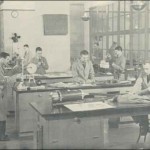 In years gone by, criminal investigations were often flawed, circumstantial, or non-existent. If the crime wasn’t witnessed by someone, it often didn’t get solved, unless someone had threatened to kill someone. Even then, the wrong person was convicted quite often…probably not often than anyone cared to admit or think about. It was a fact that no one really wanted to think about. Then, as science began to find new ways to process
In years gone by, criminal investigations were often flawed, circumstantial, or non-existent. If the crime wasn’t witnessed by someone, it often didn’t get solved, unless someone had threatened to kill someone. Even then, the wrong person was convicted quite often…probably not often than anyone cared to admit or think about. It was a fact that no one really wanted to think about. Then, as science began to find new ways to process 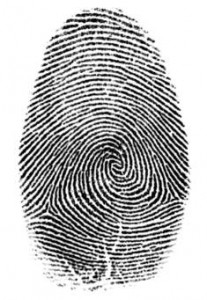 evidence, there were fewer mistakes. That didn’t and still doesn’t completely eliminate miscarriages in justice, but more and more often, the right person is sentenced.
evidence, there were fewer mistakes. That didn’t and still doesn’t completely eliminate miscarriages in justice, but more and more often, the right person is sentenced.
There are a number of television shows on these days that feature the use of a crime lab, and while I realize that the investigations rarely progress as quickly as they do on television, I do find them interesting nevertheless. I don’t know how realistic some of the tests are, but I have a feeling that the answer is…not very. Nevertheless, I like the idea of using science to catch the right criminal. Things like fingerprints, DNA testing, ballistics, and the chemical makeup of poisons, to name a few, are tests that have revolutionized the criminal justice system. 
It was on this day, November 24, 1932, that the first FBI Crime Lab opened, and while it has gone through some controversy over the years, it still remains on of the best labs in the country. The crime lab is now known as the FBI Scientific Crime Detection Laboratory. Originally this lab was chosen because it has the necessary sink operated out of a single room and only one employee. It has expanded exponentially since then. Of course, these days each state has their own lab too, and while there has been controversy as to bias over the years, those operate in much the same way. Scientific answers to serious questions. And it all started in a single room, rather primitive lab in 1932.

